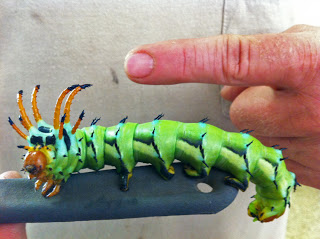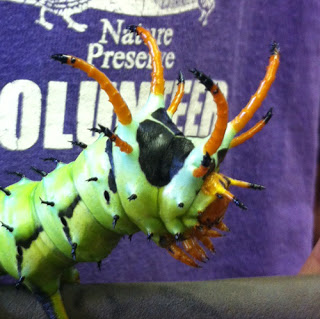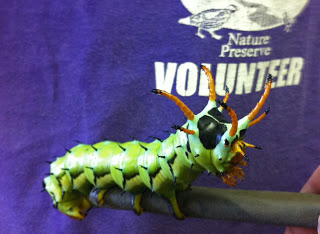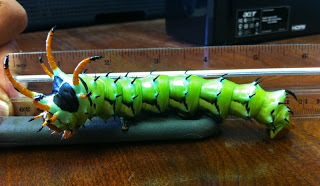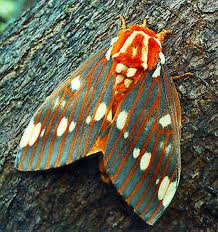Are we being invaded by space aliens? Is this some mutant monster from an industrial accident?
Should we all run off yelling and screaming?
Looks pretty scary, doesn’t it? Not to fear though, this is a hickory horned devil caterpillar, which will turn into a royal walnut moth eventually. One of our observant visitors found this beauty and brought him to the office to identify and share.
With their spiky horns and impressive length (up to 6 inches), mature hickory horned devils can be rather intimidating creatures, especially while rearing up their spiky heads when disturbed. These caterpillars are harmless, however, and they spend all summer feeding on leaves of such trees as hickory, walnut, pecan, persimmon, sumac or sweet gum. They molt as they grow, changing from the original black to brown, then tan and finally to green. In the fall, hickory horned devils stop eating and descend from the trees. At this time they are in danger of being eaten by copperheads waiting below.
If the plump caterpillars don’t become snake snack food, they burrow down into the ground and change into shiny brown pupae. The pupae remain underground for one or two winters. In the spring, the adult royal walnut moth (or regal moth) emerges. This beautiful, orange-striped moth with yellow markings has a wingspan of up to 5½ inches. (That’s really HUGE for a moth!)
Keep your eyes open when you walk around our trails at the Nature Preserve. You may find something incredible too!

